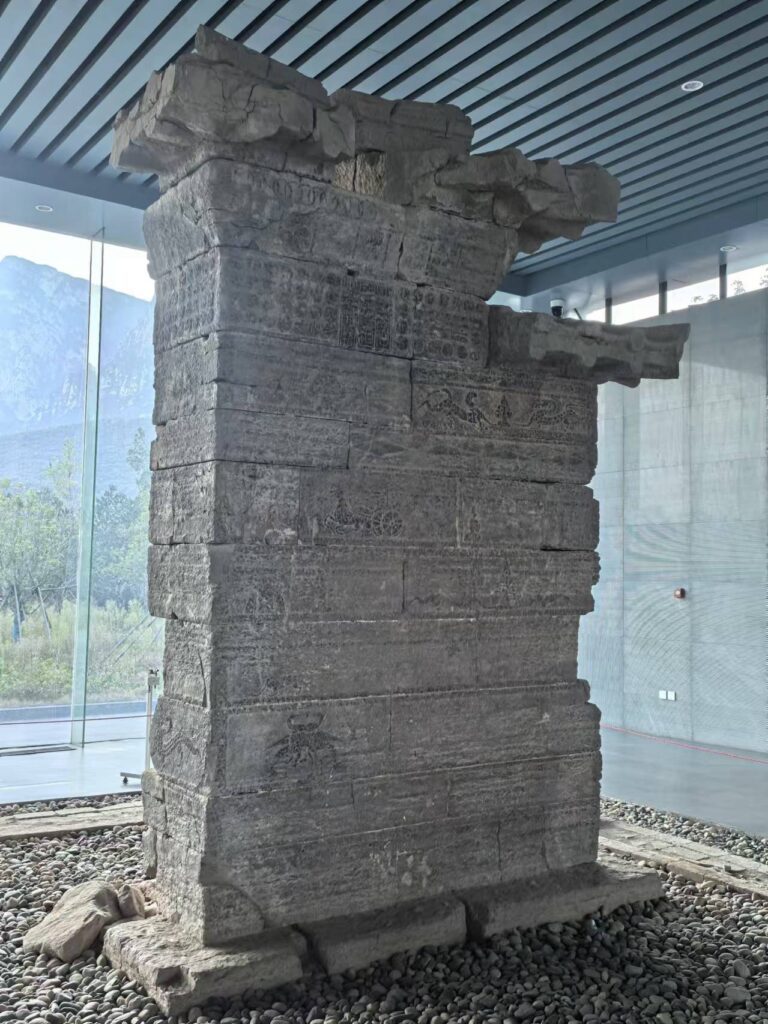In the heart of Songshan Mountain in Dengfeng, Henan, lies the ancient architectural treasure of Shaoshi Que, one of the “Three Han Ques of Mount Zhongyue.” This visit offers a glimpse into the deep historical resonance preserved within this millennia-old structure.
Shaoshi Que, located 6 kilometers west of Dengfeng’s city center at the foot of Shaoshi Mountain, was first built in the second year of the Yan’guang era of Emperor An of Han (123 AD). It stands before the Shaoshi Mountain Temple as a “spirit path que,” and along with Taishi Que and Qimu Que, forms the “Three Han Ques of Mount Zhongyue.” It is one of the earliest surviving examples of que architecture in China.

According to staff, Shaoshi Que is constructed from green stone and remains relatively well-preserved. Its structure is similar to Taishi Que, with two gateposts standing 7.6 meters apart, forming a symbolic gateway that guides visitors into the mystique of the Shaoshi Mountain Temple. The que features over 60 stone carvings on its front and back, depicting scenes such as horse racing, cuju (ancient football), cockfighting, and acrobatics—vivid representations of social life and aesthetic values during the Eastern Han Dynasty.

One notable carving portrays two galloping horses; on the first, a young girl with double topknots, dressed in fitted clothing, performs a handstand on the saddle, while on the second, a woman with flowing sleeves gracefully leans back, her robes billowing in the wind. These dynamic images capture the exhilarating spectacle of acrobatics on horseback, showcasing both the riders’ skill and the strength of the horses.
As an exemplar of ancient Chinese ritual architecture, Shaoshi Que reflects the reverence for natural deities and the religious beliefs of early societies, as well as the ceremonial traditions of the time. It serves as an invaluable resource for studying ancient China’s social, political, economic, and cultural heritage. In 1961, Shaoshi Que was designated a national key cultural relic, receiving the highest level of protection.


